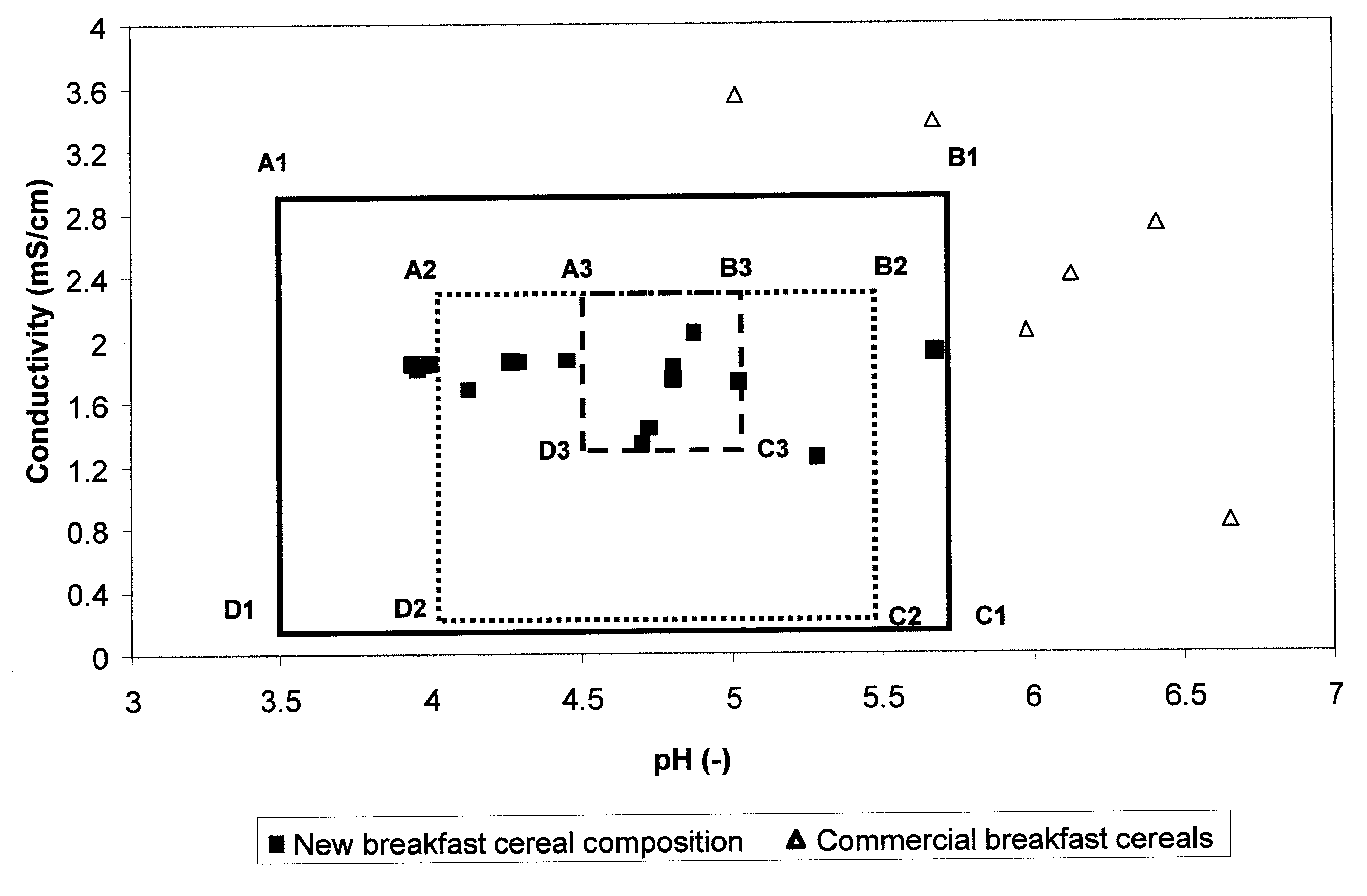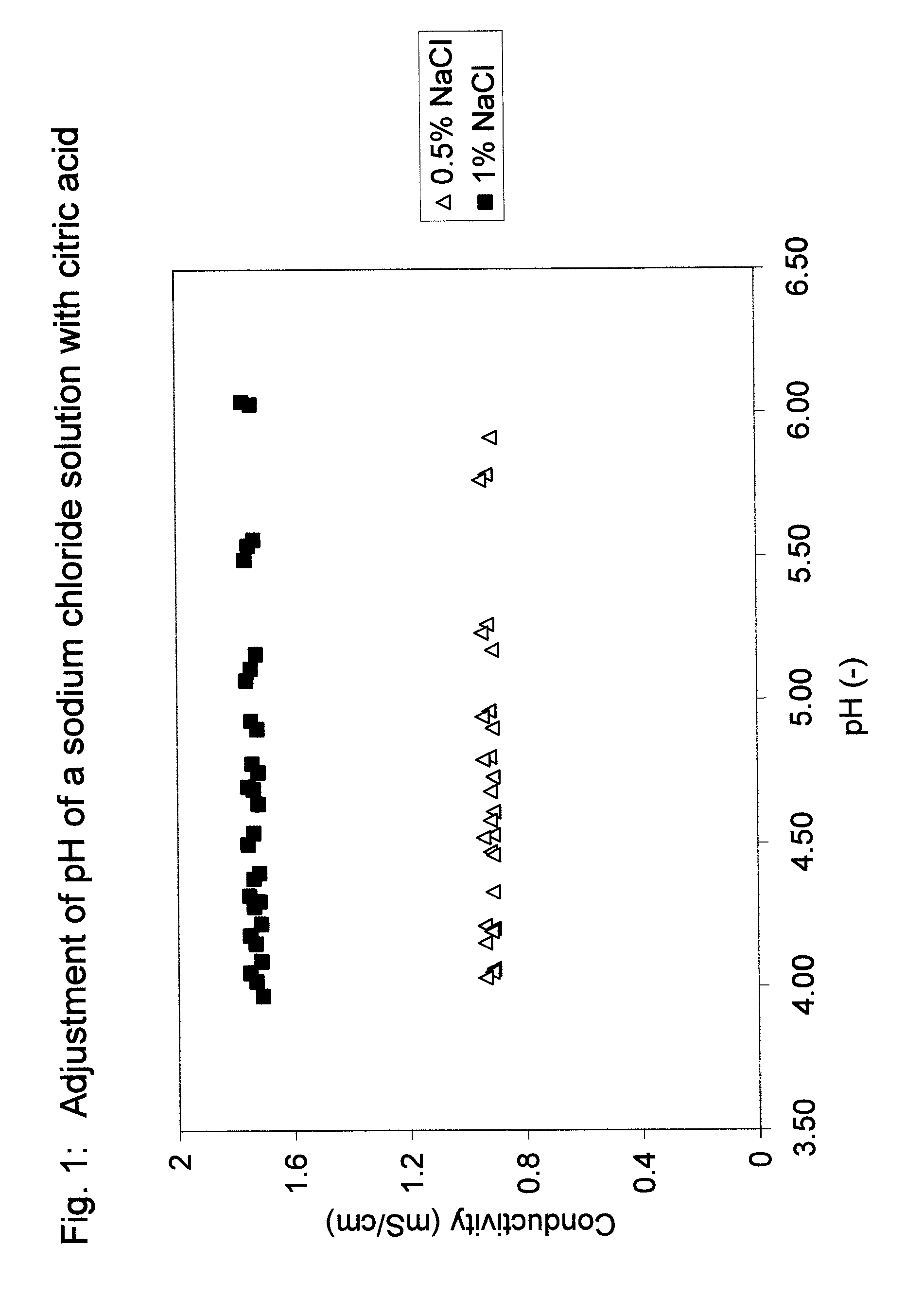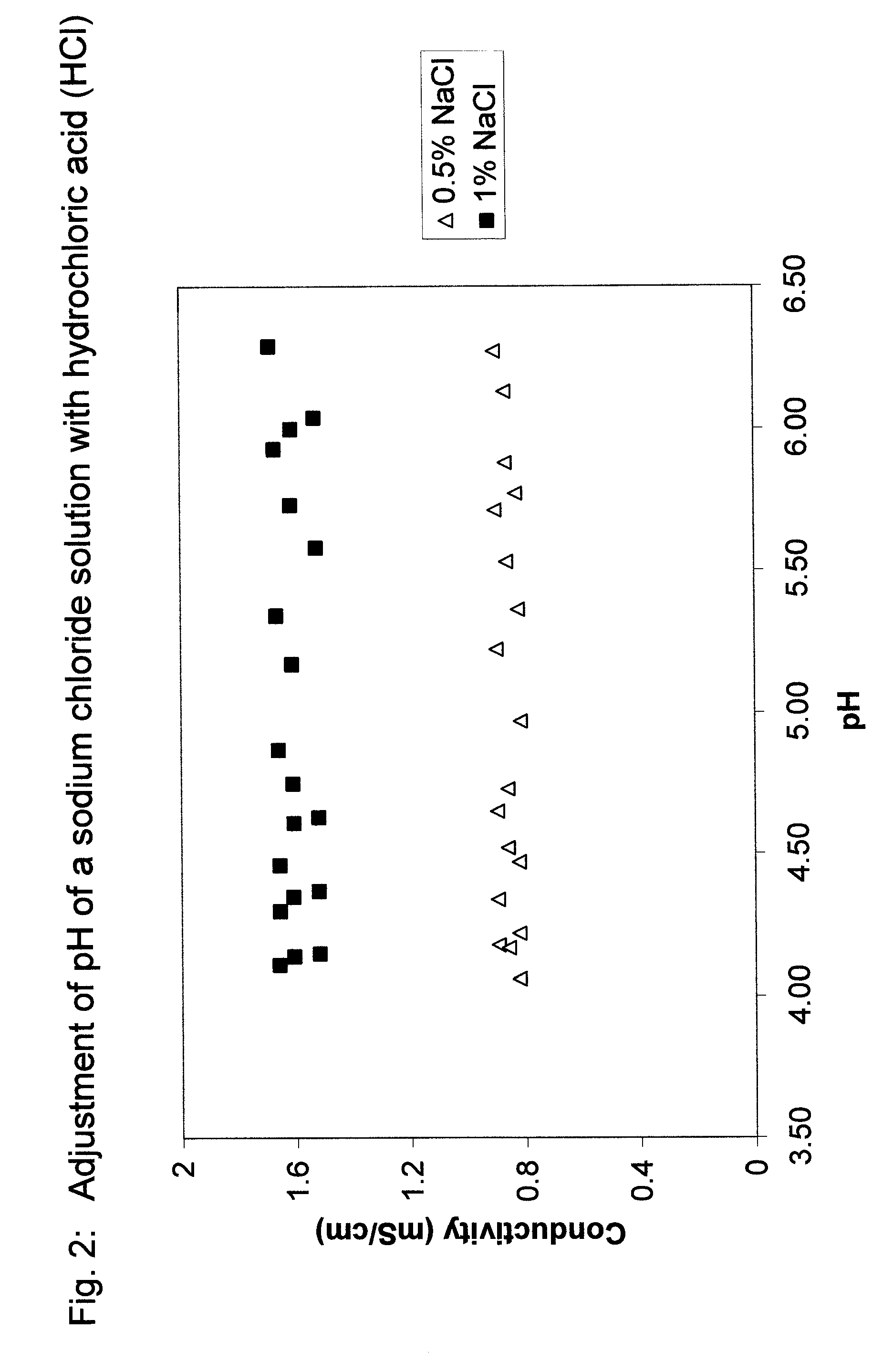Cooking of Salt Free or Reduced Salt Breakfast Cereals
- Summary
- Abstract
- Description
- Claims
- Application Information
AI Technical Summary
Benefits of technology
Problems solved by technology
Method used
Image
Examples
example 1
[0116]The effect of pH control on improved product quality of low salt breakfast cereals.
Method of Sample Preparation / Manufacture
[0117]A whole corn flake R-T-E cereal of reduced salt concentration is made according to the following procedure:
[0118]A syrup is first prepared by admixing sugar (2.5 kg), selected levels of sodium chloride, malt syrup (1.75 kg), and water (˜7 kg) into a homogeneous blend. Corn grits (32 kg) are added to the pre-steamed cooker. The prepared syrup is introduced into a pressure cooker. The mixture was cooked under pressure (18 to 25 psig) for 120 minutes at a temperature of about 270° F. until the dough was fully cooked. The cooked corn grits were then dried to a moisture of 22 to 23% and afterwards processed through flaking roles to obtain the flaked finished product shape. Thereafter, the flakes were dried and toasted at a temperature between 350° F. to 450° F. to a golden brown color and a finished product moisture of less than 3.5%. The corn flake sampl...
example 2
[0120]The effect of the use of various acids on improve product quality in salt reduced breakfast cereals.
Method of Sample Preparation / Manufacture
[0121]The breakfast cereal corn flakes samples were produced according to the method described for example 1. Samples 4 and 5 were produced with a sodium chloride addition to the syrup that corresponds to 320 mg sodium / 100 g in the finished product breakfast cereal. This is equivalent to the sodium level in samples 2 and 3. The pH of the dough in sample 4 was adjusted by adding 0.2% acetic acid, based on total formula weight, to the syrup. The pH of the dough in sample 0.5 was adjusted by adding 0.035% phosphoric acid, based on total formula weight, to the syrup. The toasted finished product corn flakes samples were analyzed by pH, conductivity, color and sensory, according to the methods described above. The results are shown in Table 2.
TABLE 2Analytical Data for Finished Low Salt Corn FlakesContaining Various Acids.ColorConductivity[L-Sa...
example 4
[0123]The effect of organic and inorganic acids on conductivity of salt solutions.
Method of Preparation
[0124]Two salt solutions were prepared using de-ionized water and sodium chloride. The salt solutions contained 0.5% or 1% of sodium chloride. The pH of the salt solutions was modified using an organic acid, citric acid, and an inorganic acid, HCl. The pH was modified from neutral, 6.3, to 3.9 and the conductivity was measured at various pH levels. The measurements were done in triplicate.
[0125]FIG. 1 depicts pH and Conductivity of sodium chloride solutions, pH Adjusted with HCl. FIG. 1 shows pH and conductivity data for salt solutions containing 0.5% and 1% NaCl, pH adjusted with HCl. It can be seen that the reduction in pH with HCl did not change the conductivity of the sodium chloride solutions.
[0126]FIG. 2 shows pH and conductivity data for salt solutions containing 0.5% and 1% NaCl, pH adjusted with citric acid. It can be seen that the reduction in pH with citric acid did not ...
PUM
 Login to View More
Login to View More Abstract
Description
Claims
Application Information
 Login to View More
Login to View More - R&D
- Intellectual Property
- Life Sciences
- Materials
- Tech Scout
- Unparalleled Data Quality
- Higher Quality Content
- 60% Fewer Hallucinations
Browse by: Latest US Patents, China's latest patents, Technical Efficacy Thesaurus, Application Domain, Technology Topic, Popular Technical Reports.
© 2025 PatSnap. All rights reserved.Legal|Privacy policy|Modern Slavery Act Transparency Statement|Sitemap|About US| Contact US: help@patsnap.com



